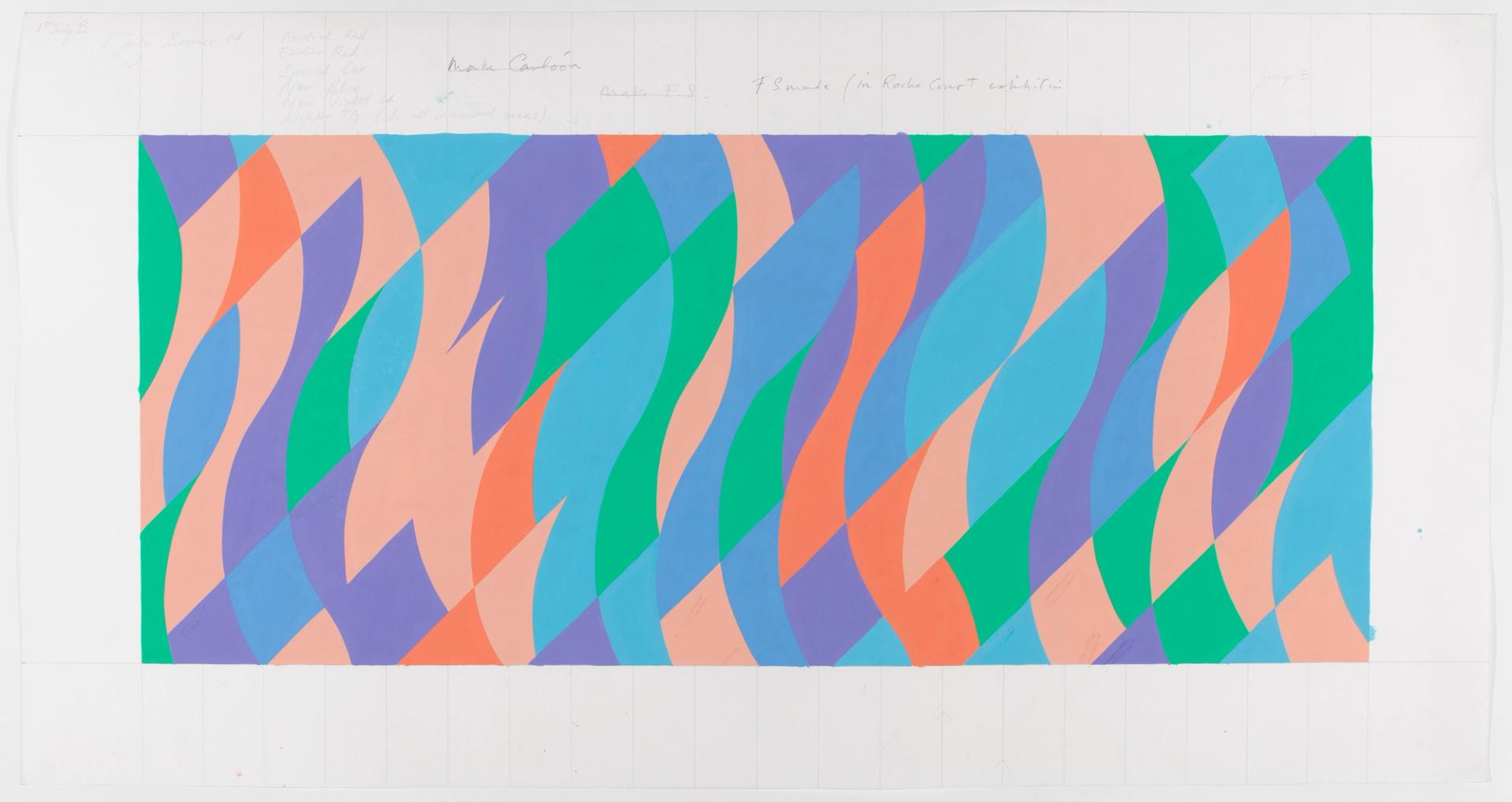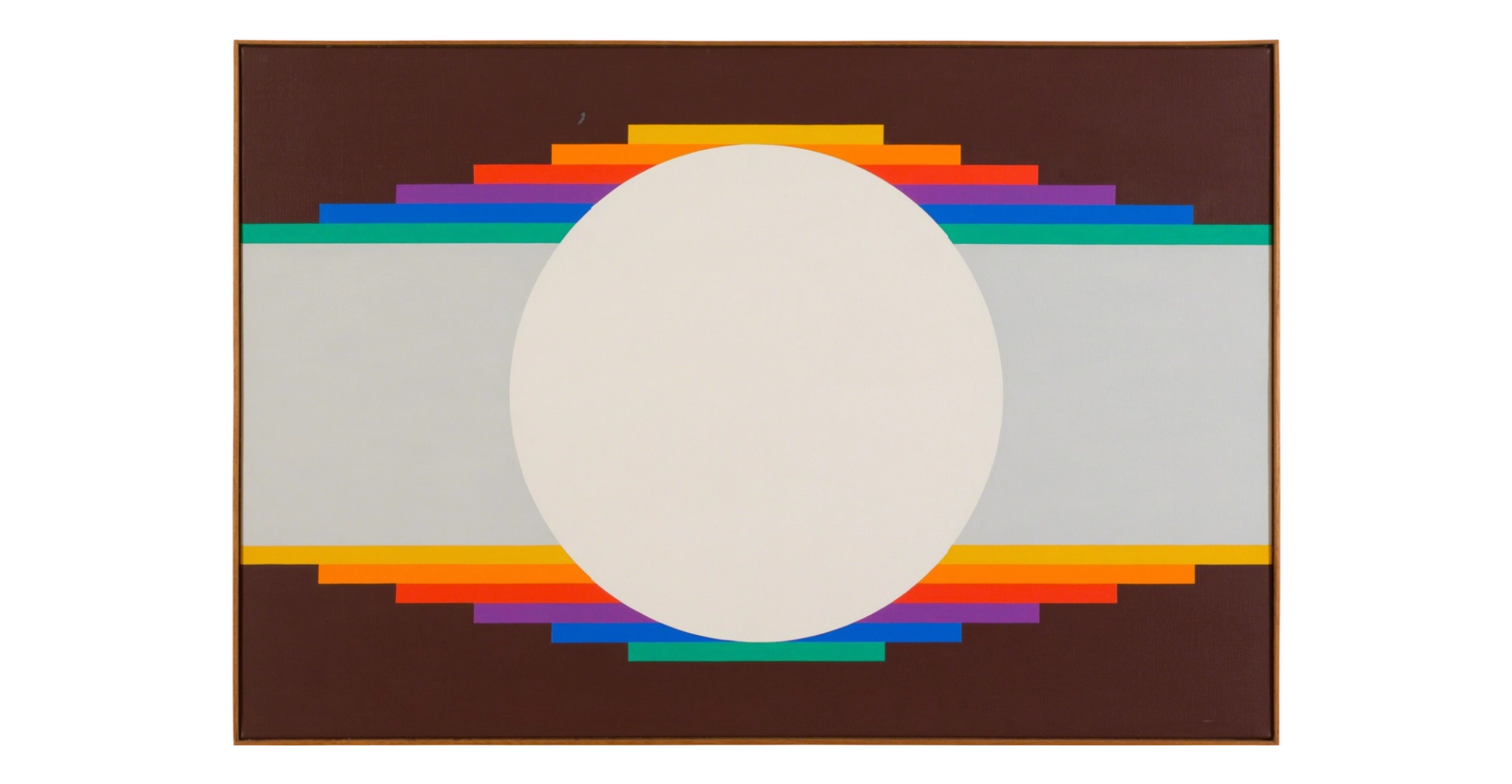At the VIP preview of the European Fine Art Fair (Tefaf) in New York, collectors dodged oyster shuckers and champagne glasses in the Gilded Age spaces of the Park Avenue Armory, eager to ask dealers what works were available and for how much, apparently more eager to discuss their purchases than buyers at other recent fairs.
This year’s fair features 91 galleries under the venue’s wrought-iron arches and historic halls, and despite a busy spring art season in New York, the number of people attending the guest-only preview on Thursday (May 11 ) suggested that Tefaf is a staple for many in the art world – stars seen roaming the stands at the preview included Anderson Cooper, the broadcaster and collector. Contrary to Tefaf Maastrichtthe original Dutch edition of the fair which concentrates old masters and antiques, Tefaf New York dealers tend to put more emphasis on modern and contemporary art and design.
New York gallery Gladstone has sold its solo stand devoted to Robert Rauschenberg’s 1983 Thai drawings, priced at $90,000 each. Lisson sold Sean Scully Dark Blue Wall (2022) to a private collection in Asia for an undisclosed price. Nathalie Obadia, a Parisian gallery participating for the first time in Tefaf, sold several works on paper by Shirley Jafffe between $35,000 and 50,000, and sculptures by Wang Keping between €55,000 and 120,000. Di Donna sold a work by surrealist Méret Oppenheim to a museum, and Hazlitt Holland-Hibbert sold four works by Bridget Riley.
The London gallery Richard Green sold family group (1949), a sculpture by Henry More, and Branksome Dene (1916), a painting by Winston Churchill. Peter Freeman sold Blah, blah, blah (2008), an ink on paper by Mel Bochner with an asking price of $20,000. The gallery also sold three recent sculptures by Charles Ledray, with asking prices between $7,000 and $10,000.

A view of Di Donna’s booth, showing works by Méret Oppenheim, at Tefaf New York 2023. Courtesy of Di Donna
While economic jitters have made wealthy collectors more selective about buying art, Tefaf executive committee chairman Hidde Van Seggelen said the fair occupies a sector of the market that has been relatively resilient.
“It would be foolish to deny this because of the turmoil we have around the world, but you’re still seeing real increases in high-value items,” says Van Seggelen. According to the last art market According to a report from Art Basel and UBS, released last month, dealers with the highest annual sales – over $10 million – saw the biggest increase in average value. sales last year, 19%.
Van Seggelen says he has seen more women’s work for sale at this Tefaf than in previous years, although the fair has not tracked the number of dealers selling women’s work or how that figure may have increased . Dealers said more collectors had expressed interest in buying works by women at this year’s fair, with one noting that this may be partly because curators of museums focus more on long-neglected female artists, which can boost an artist’s job market. (More museum representatives are visiting the fair this year than in previous editions, adds Van Seggelen).
Emmanuel Di Donna of Di Donna, a New York gallery specializing in surrealism, says he has seen a resurgence of interest in works by women who were part of the movement, including Leonora Carrington And Dorothee Tanning. Di Donna’s Tefaf stand is a presentation of the work of Oppenheim, the German-Swiss surrealist who worked alongside artists like Man Ray, Max Ernst and Marcel Duchamp. The work costs between $33,000 and just over $1 million. While Di Donna refers to Oppenheim as “the great surrealist woman”, he adds that it was a title she wouldn’t have liked. She championed the idea of creative androgyny, influenced by psychoanalyst Carl Jung, as explored in the traveling retrospective that was on view at the Museum of Modern Art through early March.
“For Oppenheim, there was no difference between a male or a female artist. She had very strong views on feminism,” says Di Donna. “She refused to be in shows where only female artists were featured.”

Bridget Riley’s Uuntitled [1 July Bassacs] (2004) Courtesy of the artist and Hazlitt Holland-Hibbert
London’s Hazlitt Holland-Hibbert gallery has a solo stand dedicated to Riley, the revered British op artist who recently turned 92 and remains very active – she recently completed a large ceiling painting at the British School in Rome. The artwork for sale at Tefaf is from a colorful series Riley worked on in the 2000s, with prices ranging from $200,000 to $2.8 million. (A travel exhibition of Riley’s works on paper will be on view at the Morgan Library & Museum in New York from June 23 to October 8).
“Bridget never called herself a female artist. For her, gender is not the important issue when it comes to creating works of art,” says James Holland-Hibbert, who works closely with with Riley for years.” However, I think it’s important that women artists have more exposure to the market more [and] collected more.
Seoul’s Hyundai Gallery has set up a solo booth for Korean artist Minjung Kim, whose work on Hanji paper (made from blackberries) draws inspiration from both traditional Korean art and European influences that she absorbed while studying in Milan. His booth work ranges from $44,000 to $152,000.
Pauline Chiche, senior director of the Parisian gallery Nathalie Obadia, explains that the dealer’s choice to bring Jaffe’s works to Tefaf was not due to the artist’s gender. Jaffe’s works on paper range from $35,000 to $50,000, while paintings cost between $250,000 and $300,000.
“It’s true that in this group of artists that we present, there are a lot of women artists, but that’s not a criterion,” says Chiche, adding that the gallery started representing the Jaffe estate there. years old. “Many collectors now focus on abstract expressionist women. And she’s in it, but we’ve been working with her for a long, long time already.

Untitled (347) (1973) by Verena Loewensberg Courtesy of Mayor’s Gallery
The Mayor Gallery in London has unveiled a solo stand for 20th century Swiss artist Verena Lowensberg, a contemporary of Zurich designers such as Max Bill, Richard Paul Lohse and Camille Graeser. His colorful and minimal paintings are on offer for $180,000 each. Gallery director John Austin says they wanted to spotlight Lowensberg, who died in 1986.
“Her career was definitely limited to being a woman. She had two kids, she was divorced. She had to make a living,” Austin says. “It was a real, real battle. She continued to paint throughout her life. She was never discouraged by it.”
- Tefaf New Yorkuntil May 16, Park Avenue Armory, New York
